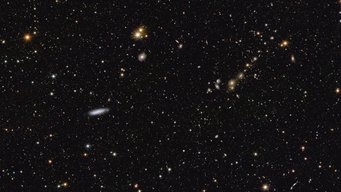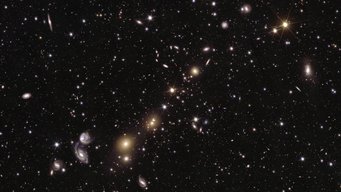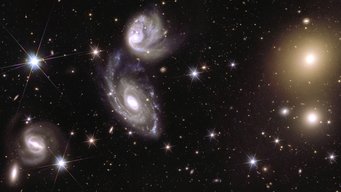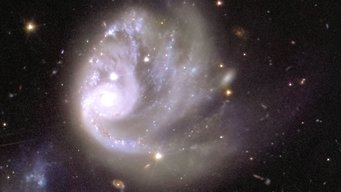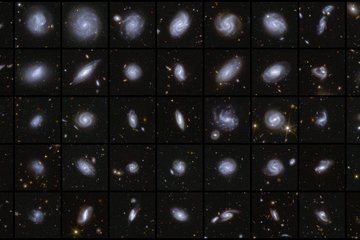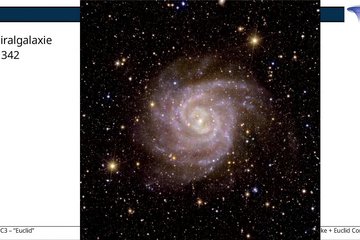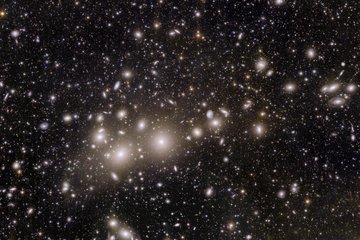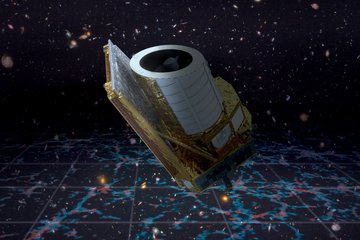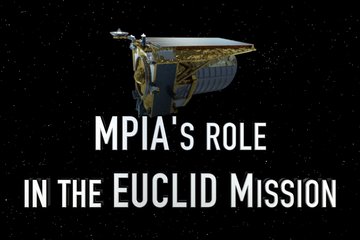Zoom into the first page of Euclid’s great cosmic atlas
Euclid reveals the first deep view into the cosmos, spanning an area of 500 full moons in the sky
On 15 October 2024, ESA’s Euclid space mission reveals the first piece of its great map of the Universe, showing millions of stars and galaxies. The captured strip across the sky demonstrates the stunning data quality at all levels, from wide-angle views of the Universe to the details of structures inside individual galaxies. Several German research institutes are involved in this ground-breaking mission, and the scientists and engineers are thrilled to see these results.

The first chunk of the final map, which is a huge mosaic of 208 gigapixels, is revealed today at the International Astronautical Congress in Milan, Italy, by ESA’s Director General Josef Aschbacher and Director of Science Carole Mundell.

On the top left, an all-sky map (41 000 square degrees) is visible with the location of Euclid’s mosaic on the Southern Sky highlighted in yellow. The mosaic contains 260 observations made between 25 March and 8 April 2024.
In just two weeks, Euclid covered 132 square degrees of the Southern Sky, more than 500 times the area of the full Moon as seen from Earth. On the top right, Euclid’s field-of-view in one observation is compared to the area of the full Moon.
The mosaic shows the locations of the various zoomed-in images. Above the separate images, the zoom factor is given (from 3 to 600 times enlarged compared to the original mosaic).
The mosaic contains 260 observations made between 25 March and 8 April 2024. In just two weeks, Euclid covered 132 square degrees of the Southern Sky in pristine detail, more than 500 times the area of the full Moon.
“Euclid has turned its keen eye to the sky and is working through its observation programme. Scientists and engineers are happy to be able to reap the rewards of 15 years of preparation,” says physicist Frank Grupp, based at Ludwig Maximilian University (LMU) in Munich and the Max Planck Institute for Extraterrestrial Physics (MPE) in Garching. He is the German project manager.
This mosaic accounts for 1% of the wide survey that Euclid will capture over six years. During this survey, the telescope observes the shapes, distances and motions of billions of galaxies out to 10 billion light-years. Doing this will create the largest cosmic 3D map ever made.
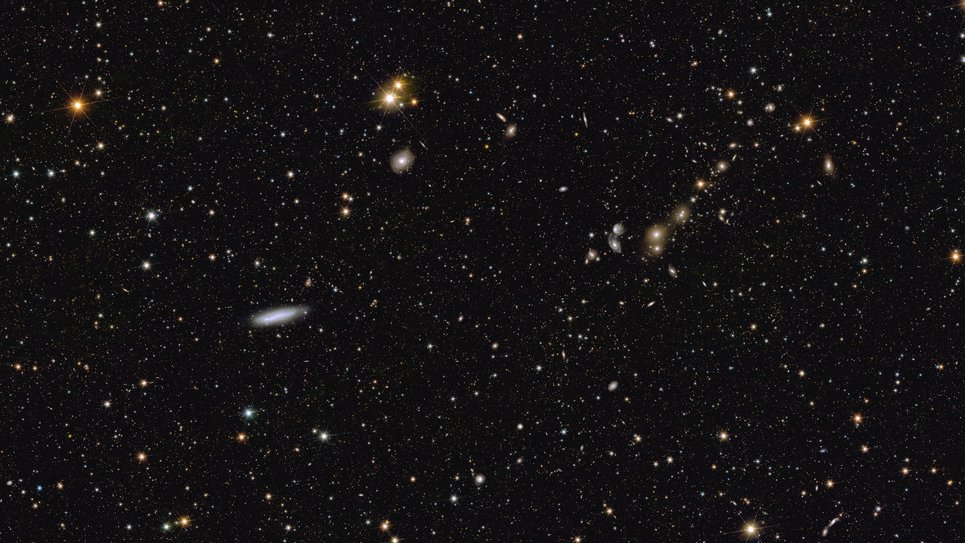
This first piece of the map already contains some 14 million galaxies that could be used to study the hidden influence of dark matter and dark energy on the Universe. It also contains tens of millions of stars in our own Milky Way.
“This stunning image is the first piece of a map that will reveal more than one third of the sky in six years. This is just 1% of the map, and yet it is full of a variety of sources that will help scientists discover new ways to describe the Universe,” says Valeria Pettorino, Euclid Project Scientist at ESA.
The spacecraft’s sensitive cameras captured an incredible number of objects in great detail. Zooming very deep into the mosaic, we can still clearly see the intricate structure of a spiral galaxy.
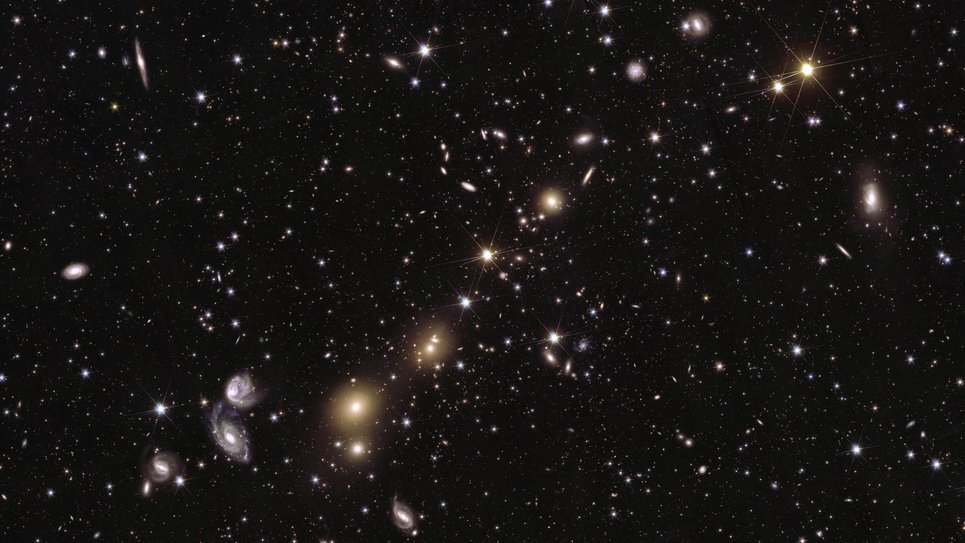
A special feature visible in the mosaic is dim clouds between the stars in our galaxy; they appear in light blue against the black background of space. They are a mix of gas and dust, also called ‘galactic cirrus’ because they look like cirrus clouds. Euclid can see these clouds with its super sensitive visible light camera because they reflect optical light from the Milky Way. The clouds also shine in far-infrared light, as seen by ESA’s Planck mission.
The mosaic released today is a teaser for what’s to come from the Euclid mission. Since the mission started its routine science observations in February, 12% of the survey has been completed. The resulting images already deliver a glimpse of the challenge for the data collection and processing infrastructure. Never before has an astronomical space mission delivered so much data in such a short time – around 100 GB of images and spectra are sent to Earth every day. A central concern of the project is the daily processing of this data.
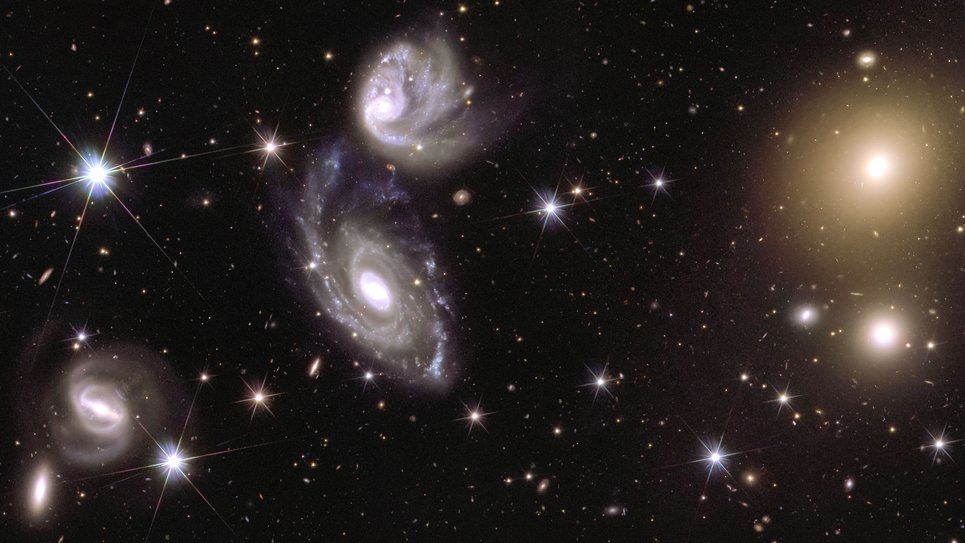
For this purpose, the Euclid consortium has set up a European network of nine data centres, including the German Science Data Center (SDC-DE), including 7,000 processors, which will handle 10% of the data. A team of six scientists and IT specialists develops algorithms and maintains the hardware.
“The constantly changing software and hardware presents our team with major challenges to assure the timely processing,” says Maximilian Fabricius (LMU and MPE), head of the SDC-DE. “However, we are proud of how well everything is now coming together and that we are now on track for processing for the first public data release.”
The release of 53 square degrees of the survey, including a preview of the Euclid Deep Field areas, is planned for March 2025. The mission’s first year of cosmology data will be released to the community in 2026.
About Euclid
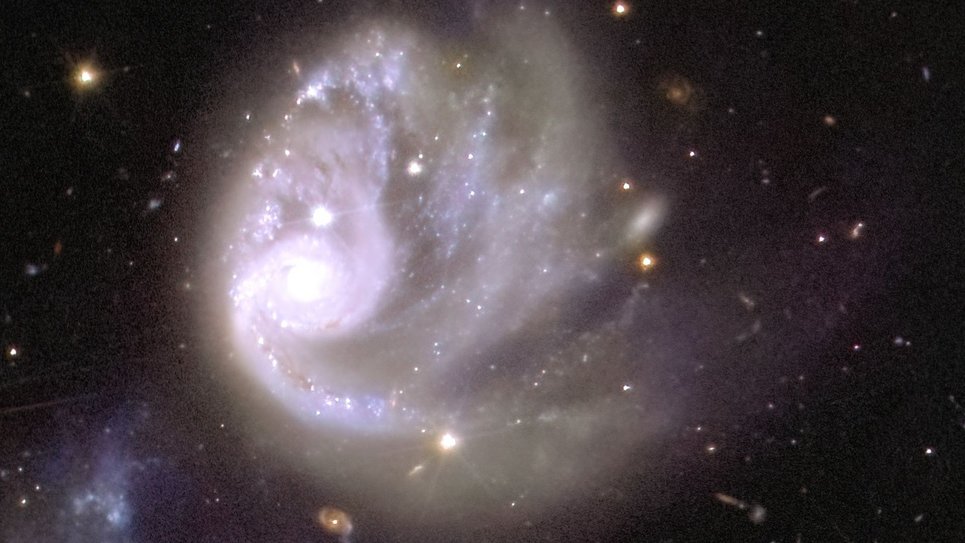
Euclid was launched in July 2023 and started its routine science observations on 14 February 2024. In November 2023 and May 2024, the world got its first glimpses of the quality of Euclid’s images.
Euclid is a European mission built and operated by the ESA, with contributions from NASA. The Euclid Consortium – consisting of more than 2000 scientists from 300 institutes in 15 European countries, the USA, Canada and Japan – is responsible for providing the scientific instruments, such as the VIS and NISP cameras, and scientific data analysis. ESA selected Thales Alenia Space as the prime contractor for constructing the satellite and its service module. Airbus Defence and Space was chosen to develop the payload module, including the telescope. NASA provided the detectors of the Near-Infrared Spectrometer and Photometer, NISP. Euclid is a medium-class mission in ESA’s Cosmic Vision Programme.
From Germany, the Max Planck Institute for Astronomy in Heidelberg, the Max Planck Institute for Extraterrestrial Physics in Garching, the Ludwig Maximilian University in Munich, the University of Bonn, the Ruhr University Bochum, the University of Bielefeld, and the German Space Agency at the German Aerospace Centre (DLR) in Bonn are participating in the Euclid project.
The German Space Agency at DLR coordinates the German ESA contributions and provides funding of 60 million euros from the National Space Programme for the participating German research institutes.
With around 21%, Germany is the most significant contributor to the ESA science programme.
This news item is based on the ESA press release, which is published at the same time.
MN


